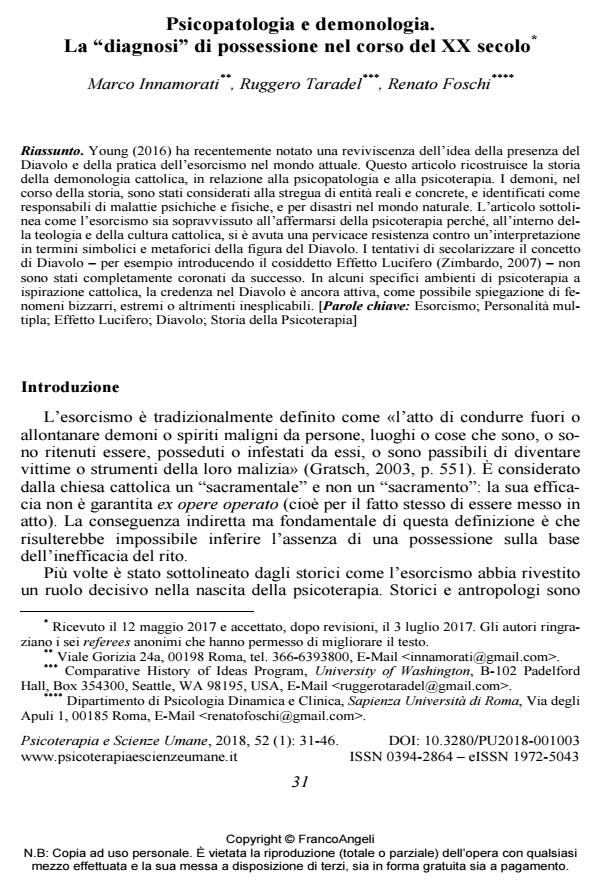Psychopathology and demonology: The "diagnosis" of possession during the 20th century.
Journal title PSICOTERAPIA E SCIENZE UMANE
Author/s Marco Innamorati, Ruggero Taradel, Renato Foschi
Publishing Year 2018 Issue 2018/1
Language Italian Pages 16 P. 31-46 File size 105 KB
DOI 10.3280/PU2018-001003
DOI is like a bar code for intellectual property: to have more infomation
click here
Below, you can see the article first page
If you want to buy this article in PDF format, you can do it, following the instructions to buy download credits

FrancoAngeli is member of Publishers International Linking Association, Inc (PILA), a not-for-profit association which run the CrossRef service enabling links to and from online scholarly content.
Young (2016) recently noticed a revival of the idea of the presence of the Devil and of the practice of exorcism. The history of Catholic demonology in its relation to psychopathology and psychotherapy is reconstructed. Demons, through the ages, have been conceived in terms of real and concrete entities, and identified as responsible for psychological and physical illness, and for disasters in the natural world. Exorcism has survived to the expansion of psychotherapy because, within Catholic theology and culture, there has been a stubborn resistance against a metaphorical or symbolical interpretation of the figure of the Devil. The attempts of secularizing the concept of Devil - e.g., introducing the so called "Lucifer effect" (Zimbardo, 2007) - have not been completely successful. In some Catholic psychotherapeutic environments the belief in the Devil and in his active presence is still alive, as a possible explanation of bizarre, extreme or otherwise unexplainable phenomena.
Keywords: Exorcism; Multiple Personality; Lucifer Effect; Devil; History of Psychotherapy
- The Social Scientific Study of Exorcism in Christianity Giuseppe Giordan, pp.95 (ISBN:978-3-030-43172-3)
Marco Innamorati, Ruggero Taradel, Renato Foschi, Psicopatologia e demonologia. La "diagnosi" di possessione nel corso del XX secolo in "PSICOTERAPIA E SCIENZE UMANE" 1/2018, pp 31-46, DOI: 10.3280/PU2018-001003